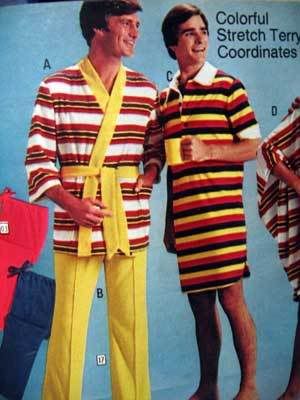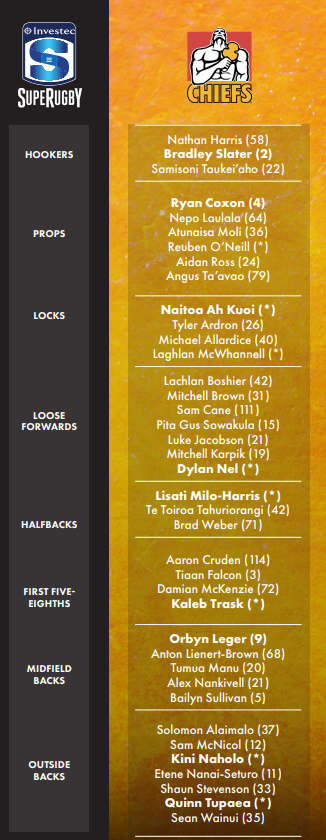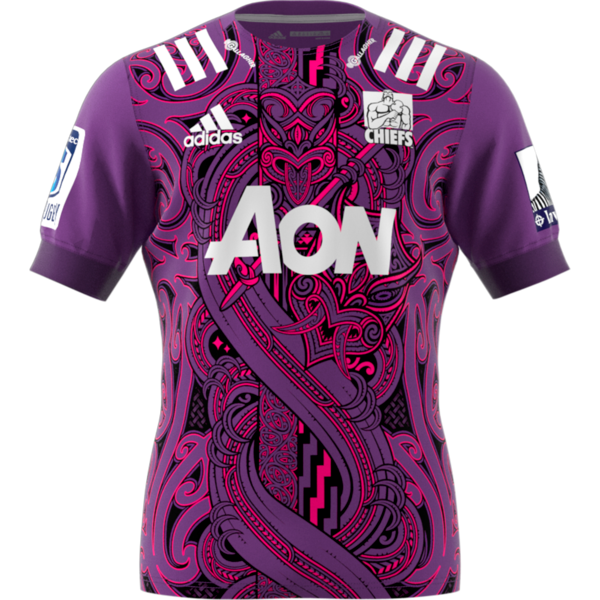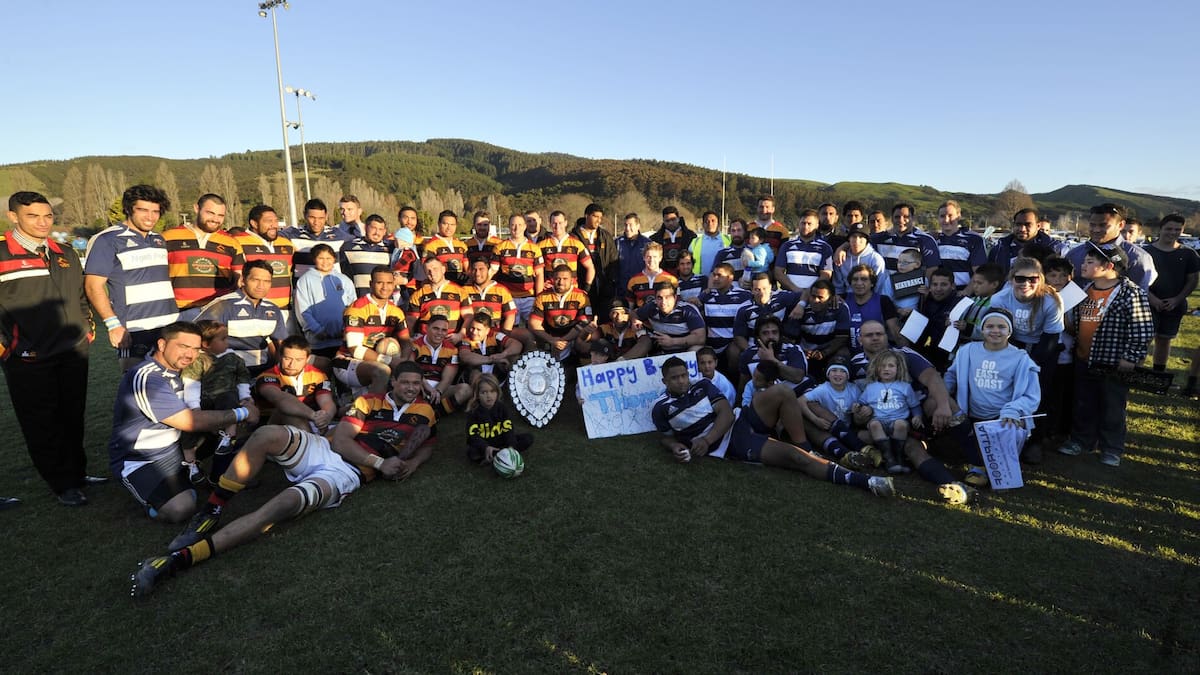RedsHappy
Tony Shaw (54)
I found this article interesting, discovered over breakfast this morning in Auckland.
How to radically rebuild a team that had under performed. Shows how often totally new approaches, coaches, and player purges are essential (amongst other things of course):
Rugby: Inside the Chiefs' revolution
By Dylan Cleaver
5:30 AM Saturday Apr 28, 2012
New Zealand Herald
The Chiefs are determined to keep their heads down and bums up during the rest of the Super 15 season.
In the spirit of the rebirth they were seeking, the Chiefs travelled back in time to the 1960s.
There they found Ruakura. Their "new" training and administrative base is a relic of the utilitarian architectural ideals of the day. As you walk down linoleum-laid hallways, the multitude of offices and meeting rooms look like the setting for a Roger Hall play. The site was a former research facility where, the tour guide unkindly points out, "geeks and boffins" once hung out.
In these rooms, the Chiefs on-field renaissance is being plotted. By any measure, what they've achieved so far has been spectacular.
There's no kind way of putting it, but the new Chiefs whare could not have been built had they not first detonated the one that was standing before.
A year ago Dave Rennie, coach-elect after Ian Foster announced his intention to move on, came riding into town delivering bad news.
Half of the 32-man 2011 squad would not be back. Some, like 100-test veteran Mils Muliaina, went of their own volition, plenty of others had decisions made for them.
In one brutal swoop, Rennie demonstrated that reputations were not of the slightest interest to him. He wanted players that could adhere to a style of rugby he and his assistants were formulating. They did not want names (a certain initialled second five-eighths being a notable exception), they wanted work ethic and, as Rennie would keep saying, "good buggers".
"Yeah, it was a tough time," veteran flanker Tanerau Latimer recalls. "I couldn't even imagine what it was like for those guys who were told they weren't wanted, but I guess what it comes down to is that it's a professional sport."
Latimer is having the most consistent season of his career. Some of it is due to a young tyro, Sam Cane, keeping him on his toes, but most of it he believes is the environment that's been created by the coaches - Rennie, Wayne Smith, Tom Coventry and Andrew Strawbridge.
Environment is one of those ubiquitous rugby words used to avoid getting into specifics. It could refer to anything from the actual facilities to the esprit de corps.
Says captain Craig Clarke: "It's a good environment to be part of. Obviously when you're trucking well and getting good results it makes coming to work pretty easy."
Success breeds success, just as losing becomes a habit.
"When you're winning it changes everything," Richard Kahui says. "You seem to find a lot of problems when you lose. When you're winning it changes the feeling around the camp.
"The environment we've got here is one where we're encouraging people to speak up, work hard and think for themselves."
Take it as read that the Chiefs are thriving in their new environment, but that's not enough.
It doesn't explain how a team that was written off by many as talented but lightweight before the season can turn around and win seven games on the trot, including three on the road, climb to top the table and mark themselves down as title contenders.
To get a better read on how the Chiefs have turned themselves around, you have to turn the tape off and ask those who have closely watched the team over a number of seasons.
One long-time observer said it was wrong to suggest they were working any harder than they did in the past. He noted that the young guys had brought an energy the veterans were feeding off and there was clearly increased belief.
More pointedly, he noted that there had been a big upgrade in the quality of forwards coaching and that Coventry deserved as much, if not more credit than Rennie and Smith.
Foster is an easy target. There was a belief that he underachieved during his eight seasons in charge, in part because he rarely had assistants who could challenge him.
The players who survived the cull have no interest in denigrating him. Why would they? Foster was widely respected and, let's face it, took the Chiefs to a Super rugby final in 2009 and a good first half of the year does not guarantee they'll replicate that success.
But different voices and new ideas have a way of cutting through.
"If you're a guy that's been there a few years and you've got new coaches coming in, you've got to prove yourself a little bit," Clarke says.
"It's what a few of us needed, to push out of your comfort zone and go out and show you're worthy of starting.
"That's one of our key phrases, that you've got to earn the right to put the jersey on each week."
Another one of their key phrases is "respect is hard-earned and easily lost".
"That's shown in crowd numbers," Clarke continues. "After 2009 we had strong crowd numbers and they slowly dwindled away. Through hard work, we're seeing a bit of growth again."
There's a danger in all this. Nothing is more guaranteed to start a losing streak than a premature congratulatory feature. The Chiefs are not so much guarding against complacency, but of suddenly over-inflated expectations.
Seven wins does not a dynasty make. Still, they must be feeling close to bullet-proof right now?
"Funny you say that," says Clarke. "I know we're winning, but it's probably on the back of a lot of grit and determination through our defence but, gee, there's a lot we can still do on attack.
"We're grinding games out but if we can be more accurate in our execution on attack, there's plenty more in us."
That is also a common theme among the Chiefs. A lingering disappointment that they've shown only glimpses of what they're capable of on attack. With Aaron Cruden, Sonny Bill Williams, Kahui and Lelia Masaga in the backs, they were probably expected to beat sides by racking up points, rather than being miserly in giving them away.
If defence is as much about attitude as it is technique, they've got it in spades. Nobody wants to be the one to be seen lying down having a breather after making a tackle.
"You know when you come in on Monday and look at the review, Smithy will tap you on the shoulder if you're lying on the ground too long, so you get up," Clarke says.
"If you've got good D you can play below your potential and still win games. That's what we've been doing. That's probably the key thing."
Kahui is another who laughs off the suggestion the biggest danger now was the Chiefs getting ahead of themselves. "If you were in the shed after the game on the weekend, you would have seen a really deflated team. There was a feeling of underachievement.
"It's positive feeling, knowing we've won a game without playing anywhere near our potential ... but against better sides we're going to fall over. There are no issues with us thinking we're better than we are or getting comfortable because we're being challenged every day at training.
"On the attack side of the ball we haven't quite got things going yet. There's been flashes of it at times, but there has been other times when we haven't put it together. It's not too far away ... Hopefully it's against the Hurricanes."
As hard as they might be on themselves, it's impossible not to admire what they've achieved over the first half of the season.
"A lot of people were writing us off before the season, they thought if we won a few games we'd be happy. But we set standards and they were pretty high," Latimer says.
"We'll stay on this ride as long as we can because we've been to the other places and it's not nice."
Taumalolo time sets off alarm bells
As a symbol of the Chiefs' return to relevance, look no further than prop Sona Taumalolo.
Without being unkind, the Tonga international had become almost a novelty prop, capable of intermittent bursts of energy with the odd try thrown in for icing.
This year circumstances have forced him to become one of the foundation planks of the side and he is revelling in the role.
Forever etched into rugby folklore after his taunting of the French front-row in Wellington during the World Cup, Taumalolo has added real substance to his CV this year.
"At the moment we're pretty happy with how we're going," he said.
"We stick together as a team and as a bunch of boys. We know it's going to be hard. We're only halfway through, there's a long way to go.
"We had two props out at the start of the season [Toby Smith, who returns to the bench tonight, and Ben Afeaki] and a lot of people thought we'd find it hard and we knew we had to step up and take over that role.
"We're pretty happy with the way we're going on the set-piece, but we've still got a long way to go."
It's been some season for the 30-year-old loosehead prop.
He's formed a formidable combination with his relative, Ben Tameifuna, in the Chiefs' engine room, has watched his second daughter come into the world and crossed the chalk a remarkable six times.
Every time the Chiefs are on attack, you watch for the No 1 and the way he readies himself to strike - it's Taumalolo time.
"When we get to the 22m I get really excited and want to get my hands on the ball. I just hope we start driving. I see the tryline and think: 'Yeah, now's my time to take over'."
By Dylan Cleaver
How to radically rebuild a team that had under performed. Shows how often totally new approaches, coaches, and player purges are essential (amongst other things of course):
Rugby: Inside the Chiefs' revolution
By Dylan Cleaver
5:30 AM Saturday Apr 28, 2012
New Zealand Herald
The Chiefs are determined to keep their heads down and bums up during the rest of the Super 15 season.
In the spirit of the rebirth they were seeking, the Chiefs travelled back in time to the 1960s.
There they found Ruakura. Their "new" training and administrative base is a relic of the utilitarian architectural ideals of the day. As you walk down linoleum-laid hallways, the multitude of offices and meeting rooms look like the setting for a Roger Hall play. The site was a former research facility where, the tour guide unkindly points out, "geeks and boffins" once hung out.
In these rooms, the Chiefs on-field renaissance is being plotted. By any measure, what they've achieved so far has been spectacular.
There's no kind way of putting it, but the new Chiefs whare could not have been built had they not first detonated the one that was standing before.
A year ago Dave Rennie, coach-elect after Ian Foster announced his intention to move on, came riding into town delivering bad news.
Half of the 32-man 2011 squad would not be back. Some, like 100-test veteran Mils Muliaina, went of their own volition, plenty of others had decisions made for them.
In one brutal swoop, Rennie demonstrated that reputations were not of the slightest interest to him. He wanted players that could adhere to a style of rugby he and his assistants were formulating. They did not want names (a certain initialled second five-eighths being a notable exception), they wanted work ethic and, as Rennie would keep saying, "good buggers".
"Yeah, it was a tough time," veteran flanker Tanerau Latimer recalls. "I couldn't even imagine what it was like for those guys who were told they weren't wanted, but I guess what it comes down to is that it's a professional sport."
Latimer is having the most consistent season of his career. Some of it is due to a young tyro, Sam Cane, keeping him on his toes, but most of it he believes is the environment that's been created by the coaches - Rennie, Wayne Smith, Tom Coventry and Andrew Strawbridge.
Environment is one of those ubiquitous rugby words used to avoid getting into specifics. It could refer to anything from the actual facilities to the esprit de corps.
Says captain Craig Clarke: "It's a good environment to be part of. Obviously when you're trucking well and getting good results it makes coming to work pretty easy."
Success breeds success, just as losing becomes a habit.
"When you're winning it changes everything," Richard Kahui says. "You seem to find a lot of problems when you lose. When you're winning it changes the feeling around the camp.
"The environment we've got here is one where we're encouraging people to speak up, work hard and think for themselves."
Take it as read that the Chiefs are thriving in their new environment, but that's not enough.
It doesn't explain how a team that was written off by many as talented but lightweight before the season can turn around and win seven games on the trot, including three on the road, climb to top the table and mark themselves down as title contenders.
To get a better read on how the Chiefs have turned themselves around, you have to turn the tape off and ask those who have closely watched the team over a number of seasons.
One long-time observer said it was wrong to suggest they were working any harder than they did in the past. He noted that the young guys had brought an energy the veterans were feeding off and there was clearly increased belief.
More pointedly, he noted that there had been a big upgrade in the quality of forwards coaching and that Coventry deserved as much, if not more credit than Rennie and Smith.
Foster is an easy target. There was a belief that he underachieved during his eight seasons in charge, in part because he rarely had assistants who could challenge him.
The players who survived the cull have no interest in denigrating him. Why would they? Foster was widely respected and, let's face it, took the Chiefs to a Super rugby final in 2009 and a good first half of the year does not guarantee they'll replicate that success.
But different voices and new ideas have a way of cutting through.
"If you're a guy that's been there a few years and you've got new coaches coming in, you've got to prove yourself a little bit," Clarke says.
"It's what a few of us needed, to push out of your comfort zone and go out and show you're worthy of starting.
"That's one of our key phrases, that you've got to earn the right to put the jersey on each week."
Another one of their key phrases is "respect is hard-earned and easily lost".
"That's shown in crowd numbers," Clarke continues. "After 2009 we had strong crowd numbers and they slowly dwindled away. Through hard work, we're seeing a bit of growth again."
There's a danger in all this. Nothing is more guaranteed to start a losing streak than a premature congratulatory feature. The Chiefs are not so much guarding against complacency, but of suddenly over-inflated expectations.
Seven wins does not a dynasty make. Still, they must be feeling close to bullet-proof right now?
"Funny you say that," says Clarke. "I know we're winning, but it's probably on the back of a lot of grit and determination through our defence but, gee, there's a lot we can still do on attack.
"We're grinding games out but if we can be more accurate in our execution on attack, there's plenty more in us."
That is also a common theme among the Chiefs. A lingering disappointment that they've shown only glimpses of what they're capable of on attack. With Aaron Cruden, Sonny Bill Williams, Kahui and Lelia Masaga in the backs, they were probably expected to beat sides by racking up points, rather than being miserly in giving them away.
If defence is as much about attitude as it is technique, they've got it in spades. Nobody wants to be the one to be seen lying down having a breather after making a tackle.
"You know when you come in on Monday and look at the review, Smithy will tap you on the shoulder if you're lying on the ground too long, so you get up," Clarke says.
"If you've got good D you can play below your potential and still win games. That's what we've been doing. That's probably the key thing."
Kahui is another who laughs off the suggestion the biggest danger now was the Chiefs getting ahead of themselves. "If you were in the shed after the game on the weekend, you would have seen a really deflated team. There was a feeling of underachievement.
"It's positive feeling, knowing we've won a game without playing anywhere near our potential ... but against better sides we're going to fall over. There are no issues with us thinking we're better than we are or getting comfortable because we're being challenged every day at training.
"On the attack side of the ball we haven't quite got things going yet. There's been flashes of it at times, but there has been other times when we haven't put it together. It's not too far away ... Hopefully it's against the Hurricanes."
As hard as they might be on themselves, it's impossible not to admire what they've achieved over the first half of the season.
"A lot of people were writing us off before the season, they thought if we won a few games we'd be happy. But we set standards and they were pretty high," Latimer says.
"We'll stay on this ride as long as we can because we've been to the other places and it's not nice."
Taumalolo time sets off alarm bells
As a symbol of the Chiefs' return to relevance, look no further than prop Sona Taumalolo.
Without being unkind, the Tonga international had become almost a novelty prop, capable of intermittent bursts of energy with the odd try thrown in for icing.
This year circumstances have forced him to become one of the foundation planks of the side and he is revelling in the role.
Forever etched into rugby folklore after his taunting of the French front-row in Wellington during the World Cup, Taumalolo has added real substance to his CV this year.
"At the moment we're pretty happy with how we're going," he said.
"We stick together as a team and as a bunch of boys. We know it's going to be hard. We're only halfway through, there's a long way to go.
"We had two props out at the start of the season [Toby Smith, who returns to the bench tonight, and Ben Afeaki] and a lot of people thought we'd find it hard and we knew we had to step up and take over that role.
"We're pretty happy with the way we're going on the set-piece, but we've still got a long way to go."
It's been some season for the 30-year-old loosehead prop.
He's formed a formidable combination with his relative, Ben Tameifuna, in the Chiefs' engine room, has watched his second daughter come into the world and crossed the chalk a remarkable six times.
Every time the Chiefs are on attack, you watch for the No 1 and the way he readies himself to strike - it's Taumalolo time.
"When we get to the 22m I get really excited and want to get my hands on the ball. I just hope we start driving. I see the tryline and think: 'Yeah, now's my time to take over'."
By Dylan Cleaver
Last edited by a moderator:





